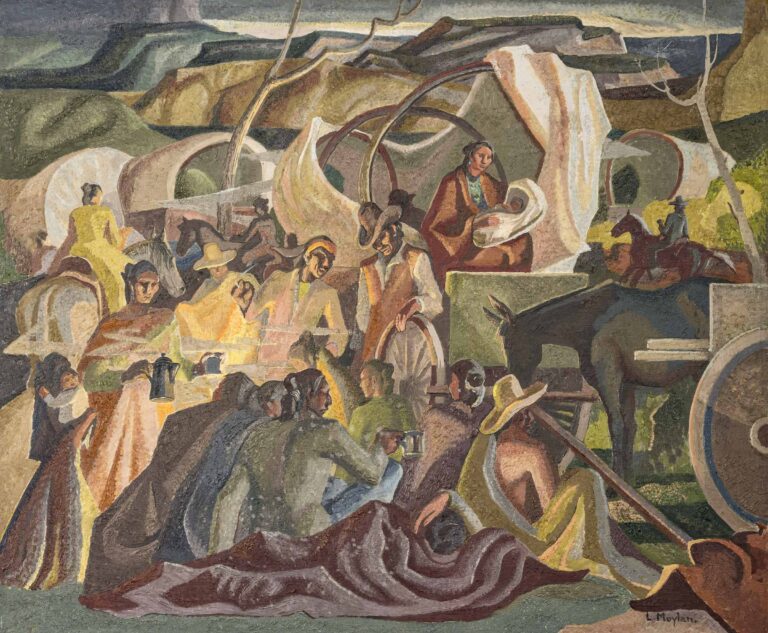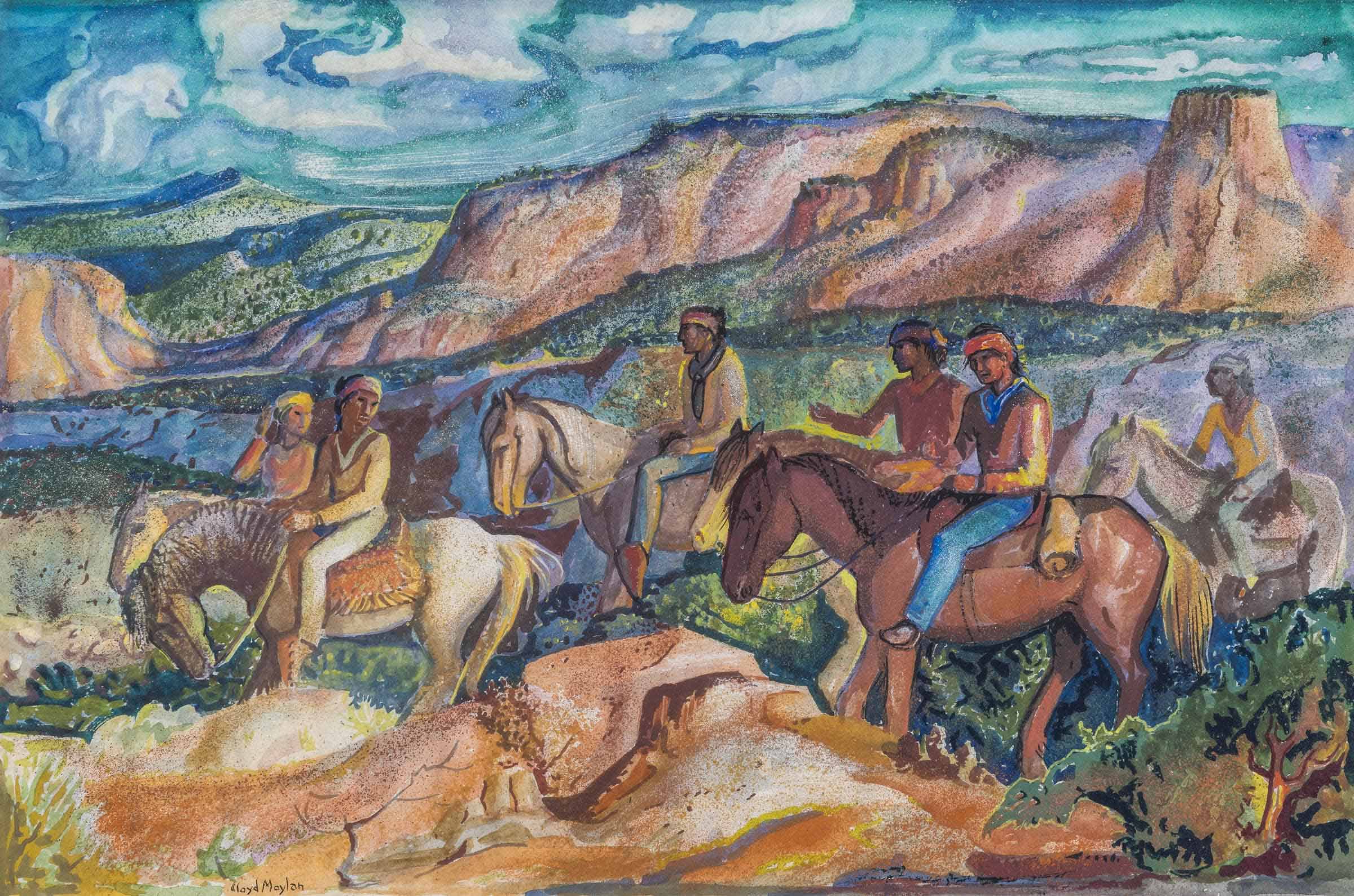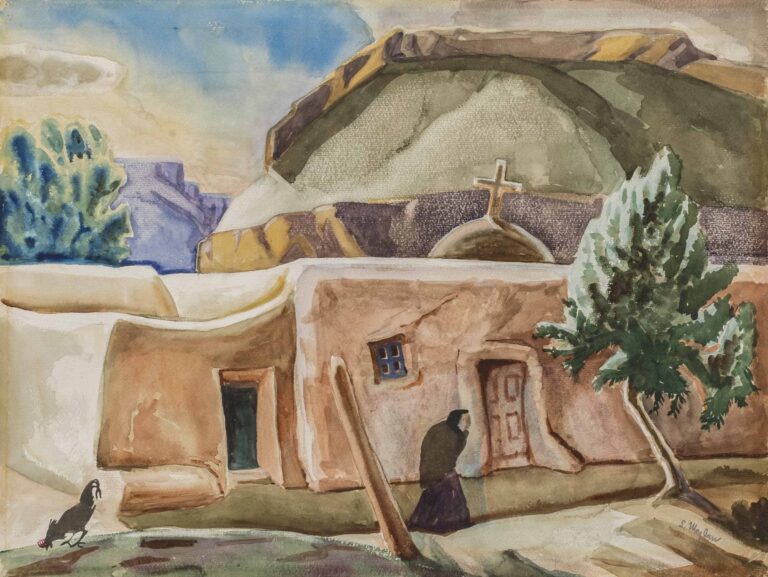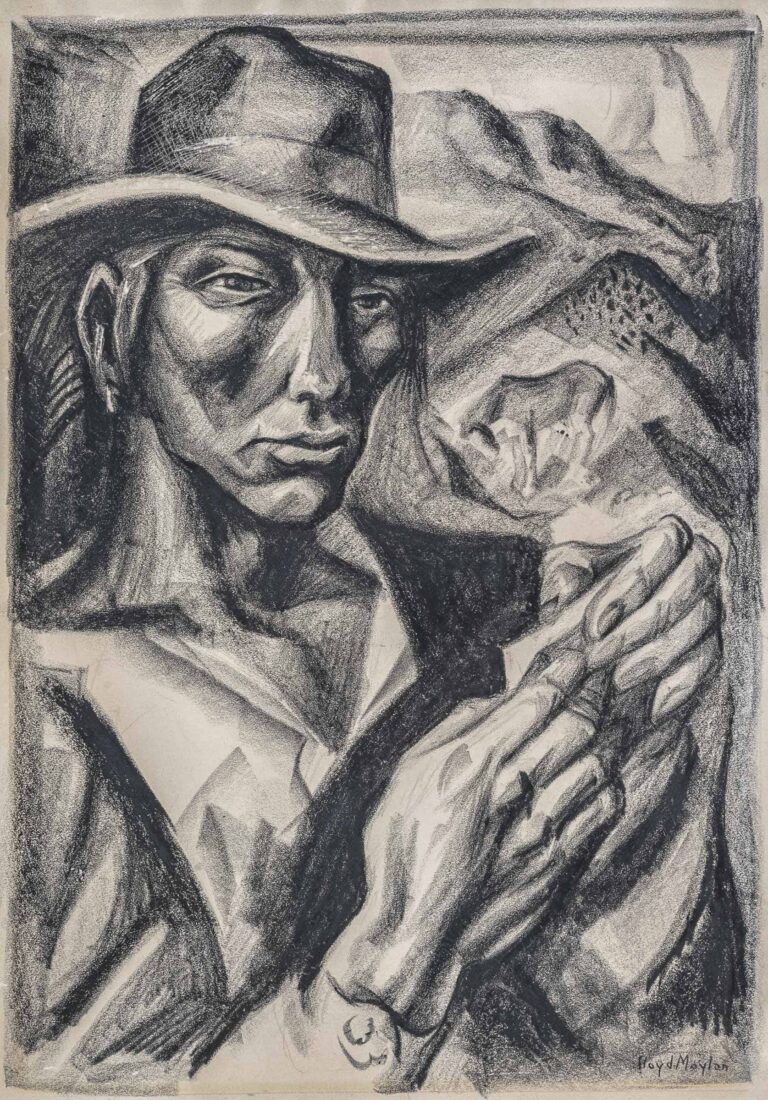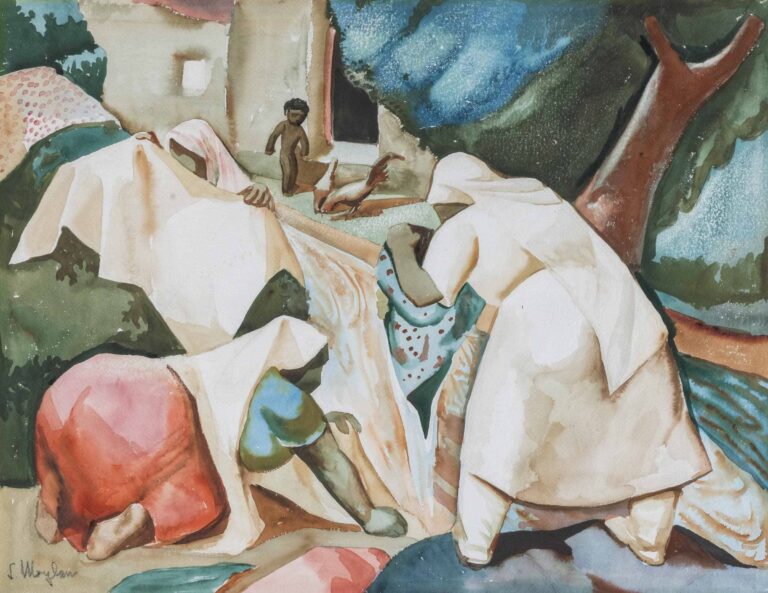Appointment in Gallup pictures the seven decades–old (as of 1942) practice of Diné (Navajo)/settler trade established by the reservation system, as a group of Diné riders makes its way to the reservation border town of Gallup, NM, to conduct business. The title of the painting and the composition itself—the men appear to be riding at a leisurely pace and making casual conversation—imply a commonplace, routine activity, but that is only the beginning of the story. In reality, border town relationships have, since their inception, been far from neutral. “Border towns depend upon the products, labor, and economic activity of Native Americans . . . yet power and resources are disproportionately held by non-Native residents.”1 When this painting was made, the City of Gallup’s population—according to the 1940 U.S. Census—was 97 percent white and 1.34 percent “Indian.” Moylan probably saw this as just another aspect of Diné life, which it is, but he missed the underlying tensions and inequities.
